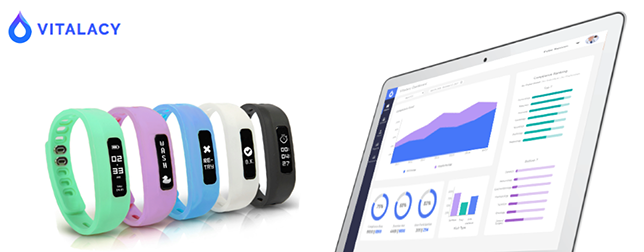Vitalacy is a hygiene-monitoring wearable designed to prevent the transmission of healthcare-associated infections by tracking hand-washing among doctors, nurses and patients. The wristband uses (IoT) and wearable technology to provide hospitals with data, technology, and guidance to fight the spread of infectious diseases.
Hand-washing compliance among doctors and nurses
Overall, nurses are more compliant with hand hygiene in clinical settings than physicians, that’s according to studies. Though both these groups fall short of being 100% compliant in hand washing, and decrease in hand washing among nurses may be due to factors such as burnout.
Read more A Sleek, Comfortable Alternative to Face Masks: Wearable Filtration Device
A study published in the journal Lancet Infectious Diseases, around 71% of nurses comply with hand-washing guidelines. In contrast, only about 60% of doctors complied with hand-washing guidelines. The pilot study was conducted locations in several countries before any hand hygiene intervention programs were established.
Why Are Nurses Naturally More Compliant with Hand Hygiene?
A behavioral study on hand-washing compliance revealed several obstacles for hand-washing compliance among doctors. Reasons reported by physicians for not complying with proper hand washing in a clinical setting included:
- Not remembering to wash hands
- Feeling in a hurry or having a high workload
- Not knowing where the sink is or not having easy access to a sink
- No soap or paper towels in the dispenser
- Broken soap dispensers

It was also noted in the study that physicians may perceive themselves as having a better compliance with hand hygiene, and as a group they do not always possess active role models for showing good hand-washing habits.
Read more Wearable MRI Glove Provides New Viewpoint to Hand Anatomy
When these findings are compared with the obstacles to hand-washing reported by nurses, many overlaps are observed. Like doctors, nurses aren’t 100% compliant with hand-washing either, and they also report dealing with empty soap dispensers, feeling rushed and other hurdles.
However, the role played by a nurse and her relationship with the facility and work can cause these obstacles to be lees of a constraint. Nurses often perform their duties in the same area regularly, whereas physicians may work at various wards or floors. This makes a nurse more informed about the location of the sink and proper supply of soaps and paper towels.
Ensuring hand-hygiene compliance with Vitalacy
Vitalacy’s proven system boosts hand-hygiene compliance through the use of a wristband worn by hospital staff. The wearable vibrates to alert doctors, nurses or others when they have entered patient zones without first following proper hand-hygiene protocol. The device also collects data on the quality and duration of hand washing or sanitizer use.












